
Our understanding of fundamental Earth processes requires multifaceted investigations that span a large range of temporal and spatial scales. This workshop will focus on cutting edge geophysical results of processes in the solid earth, cryosphere, oceans and atmosphere and will highlight synergies between the NSF SAGE and NSF GAGE communities.
Science Planning Committee:
Have questions? Please contact Danielle Sumy (danielle.sumy@earthscope.org) and Donna Charlevoix (donnac@unavco.org) for more information.
Code of Conduct: Please take a moment to review our Code of Conduct.
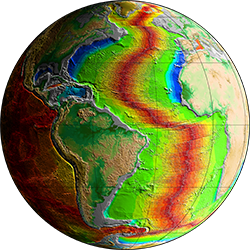 |
Bridging the Observational Gap in Time: Processes Today and their Relationship to the PastRecent advances in geodesy, imaging and earthquake seismology, geodynamic modeling, paleoseismology and other fields have opened new opportunities to link observations of incremental deformation events occurring on timescales of seconds to thousands of years with the integrated deformation record locked into geology and the landscape. These advances hold the potential to more completely describe how plate boundary deformation processes evolve over single to multiple earthquake cycles, and to test how well the past can inform the future. This session highlights current advancements (across a range of disciplines) in linking timescales in active deformation and will discuss future directions for bridging the diverse timescales of earth deformation processes. |
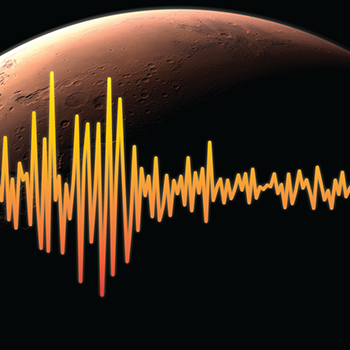 |
Advances in Geophysics in Extreme EnvironmentsAdvances in instrumentation and creative new studies have recently led to an increase in observations in previously under-sampled or inaccessible areas, such as polar regions, ocean basins and other extreme environments, yielding fundamental new insights into Earth structure and processes. With the recent deployment of a seismometer and other sensors on Mars, another frontier area in planetary geophysics is opening. This session will showcase new results from seismological, geodetic, and other geophysical studies in extreme environments that are important to addressing fundamental questions in Earth and planetary science. |
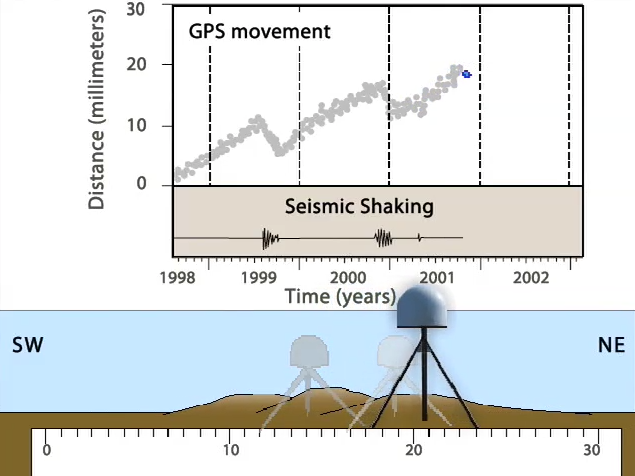 |
Subduction Zones through the Lens of Seismology, Geodesy, and other Geophysical MethodsUnderstanding the diversity of interrelated processes that occur at subduction zones requires highly interdisciplinary approaches, including a range of seismological, geodetic, electromagnetic, and geological techniques. The development of new instrumentation, new observations from several recent large, geophysical experiments, and improvements in onshore and offshore geodetic and seismic monitoring networks have begun to transform our knowledge of subduction plate boundary and volcanic arc processes over the last decade. This session will address major advances in our understanding of subduction zones that have come from seismological and geodetic investigations. We will also focus on new frontiers for combining seismology and geodesy to improve understanding of subduction processes at a range of timescales, over multiple seismic and eruptive cycles. |
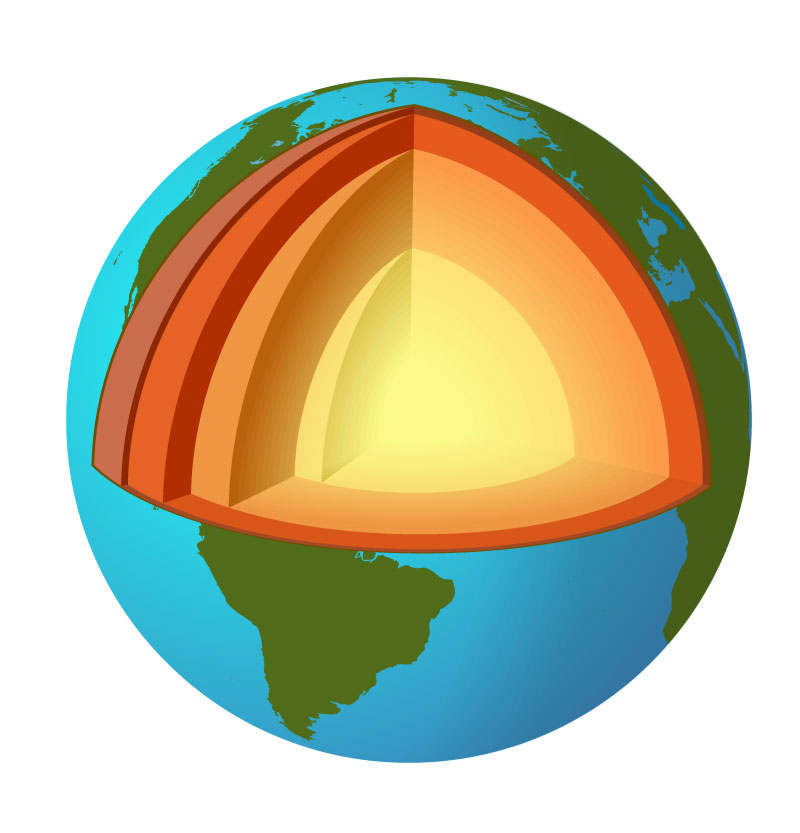 |
Earth Rheology and Structure: New Approaches, Applications, and Implications for DynamicsSeismological and geodetic observations provide crucial constraints on the rheology and dynamics of the crust and mantle. A comprehensive picture of Earth rheology requires diverse observations made at different time scales and length scales, including: models of seismic velocity, attenuation, and its anisotropy; electrical resistivity and its anisotropy; post-seismic relaxation; glacial isostatic adjustment; solid earth tides; seasonal deformation cycles; and groundwater withdrawal. Field and experimental data also contribute important information. This session will highlight recent advances in determining the rheological properties of the Earth’s interior and applications of seismological and geodetic studies to phenomena ranging from mantle dynamics to ice-sheet stability and sea-level rise to grain-scale deformation. |
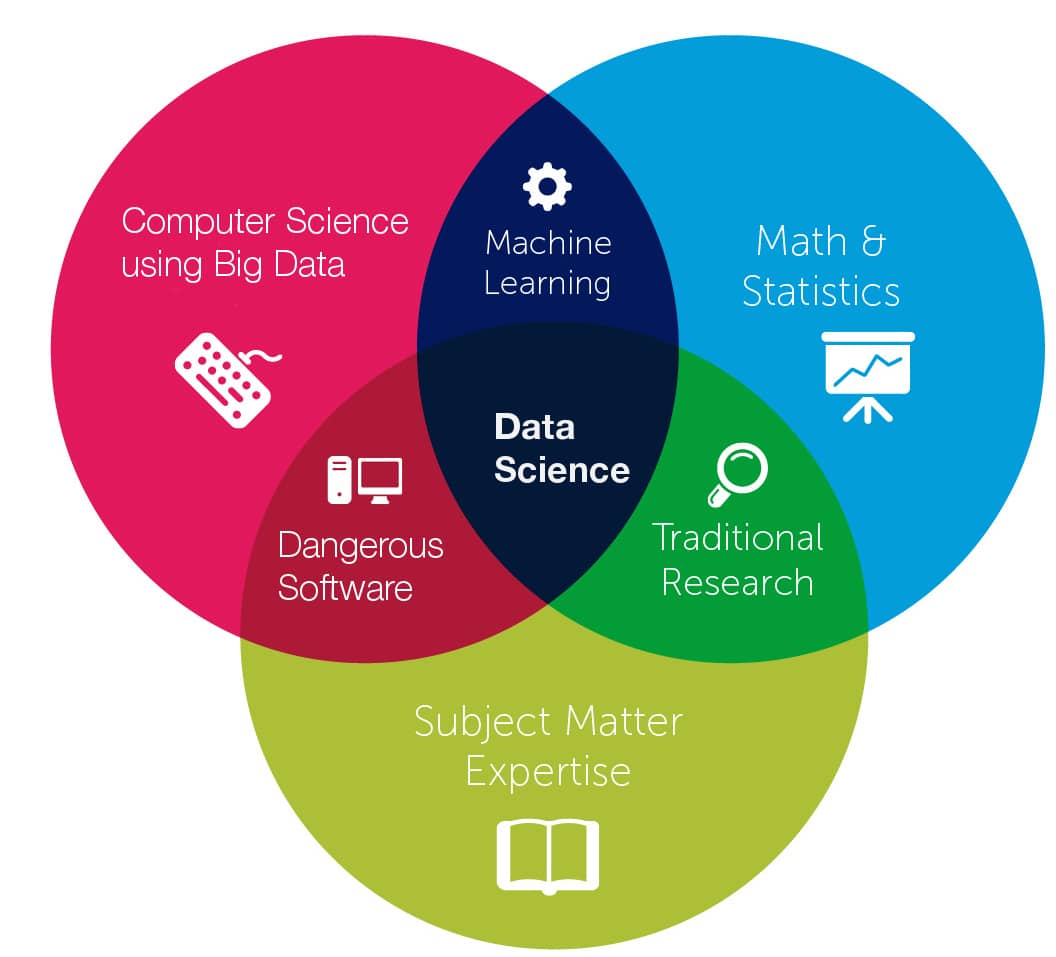 |
New and Exotic Approaches for Acquiring, Analyzing and Modeling in GeophysicsThe SAGE-GAGE communities commonly conduct research and educate at the forefront of Earth science disciplines. These activities often encapsulate embracing, leading, and innovating new analysis and modeling approaches, exploring novel uses for well-established observations and instruments, and training the next generation of Earth scientists in these tools. This session highlights new approaches to acquire, analyze, model, and teach on and about these rich geophysical datasets and techniques that are hallmarks of the SAGE-GAGE community. |
TRAVEL SUPPORT FOR SCHOLARSHIPS:
Undergraduate and Graduate Students & Postdocs are eligible to apply for scholarships. Please see the Scholarship tab to apply.
If selected, you will receive three (3) nights double-occupancy lodging (for the nights of October 8-October 10), and up to $500 for travel. You are required to pay the $150 registration fee. You will need to submit all travel receipts for reimbursement, excluding the hotel which will be booked for you. If you apply for the scholarship, please wait until decisions are made, as IRIS will then book your hotel room.
AIRPORT:
The SAGE/GAGE Workshop will be held in Portland, Oregon. The nearest airport is Portland International Airport (PDX). The airport is located 13 miles (25 minutes) from the hotel.
FLIGHT DISCOUNT:
Workshop attendees can access a flight discount through Alaska Airlines. To use this discount (which may not be applicable to all flight classes):
Workshop attendees may also use the discount code by calling Alaska Airlines Group Desk (800-445-4435), however, a $15.00/per person ticketing fee will apply. The Group Desk hours of operation are Monday-Friday 6am-6pm PST, Saturday 7:30am-6pm PST, closed Sunday.
HOTEL:
Note: If you are a student scholarship recipient please do not book your hotel room. A double occupancy hotel room will be booked on your behalf by IRIS.
Hilton Portland Downtown
921 SW Sixth Avenue
Portland, Oregon 97204
(503) 226-1611
The reduced group room rate is $229/night USD. In addition, a 13.3% hotel occupancy tax and a 2% Tourism Improvement District (TID) will be billed to each room night charge; there is a State of Oregon sales tax rate of 0%. The cut-off date to make room reservations is Monday, September 9, 2019. Please visit this website to make your reservations. If you prefer to call-in and make your reservation, you can call 800-HILTONS (1-800-445-8667) and mention the Group Code: IRI. Reservations made after the cut-off date will not be offered the group rate. Additionally, the group rate is first come first serve; reservations made after the block is filled may need to pay the regular hotel rate.
GROUND TRANSPORTATION:
Portland offers a MAX Red Line Rail Service between the Portland International Airport (PDX) and Portland City Center. The rail service runs every 15 minutes or better and the station closest to the hotel is the Pioneer Square South Station. The trip to/from downtown Portland takes about 38 minutes and costs $2.50 for Adults, $1.25 for Seniors 65+, and $1.25 for Youth ages 7-17. The MAX Station and ticket machines are located near baggage claim on the lower level of PDX.
If you're driving to the hotel from PDX: Airport Way: Right on HWY 205 South; Right on I-84 West; Approximately 4 miles, Follow signs to City Center/Morrison Street. Go over Morrison Bridge; Go straight 5 blocks; Left on SW Broadway; Left on Salmon; Left on SW 6th Avenue. Front doors will be on the left.
PARKING:
Overnight Hotel Guests: The hotel does not offer Self Parking. Secured and covered Valet Parking is at a rate of $52/night, with in/out privileges. The hotel is unable to accept oversized vehicles.
THINGS TO DO IN PORTLAND, OR:
Sunday, October 6Sunday, October 6th, 2019, 5–7pm |
|
|---|---|
|
5:00 pm |
2019 Communicating Geohazards: Delivering Information in Crisis and Calm Funded By the American Geophysical Union's AGU Celebrates 100 Grant Communicating hazards can be challenging, yet is critical for public safety and understanding. This two-day short course with three remote follow-on sessions will cover responsible communication of geohazards, with a focus on earthquakes and volcanoes of the Pacific Northwest. This course is open to all current graduate students in geoscience and journalism. No previous experience in communicating about geohazards is required. For more information, please look at the website here. This workshop will begin on Sunday, October 6th at 5 PM and end on Tuesday, October 8th at 12 PM. Registration opens on August 1.
|
Day 0: Tuesday, October 8thTuesday, October 8th, 2019, 8am–5pm |
|
|---|---|
|
8:00 am |
InSAR Data Interpretation and Analysis for Nonspecialists Room: Broadway I (Plaza Level) Description: The expansion of cloud-based routine processing efforts accompanying the Sentinel-1 mission, and in anticipation of the forthcoming NISAR mission, have dramatically expanded the volume of processed InSAR data in the public domain, providing access to InSAR data products without the need to learn InSAR processing. This workshop is targeted at researchers who would like to use these processed products effectively. In this full-day short course, we will focus on the interpretation of processed InSAR data and how these data can be analyzed and modeled. Topics to be covered include: background theory and processing methodology, data errors and common issues, satellite missions and processed data repositories, time series analysis, data interpretation and ingesting data into modeling efforts. To register or ask questions, please contact Kristy Tiampo at kristy.tiampo@colorado.edu
|
|
1:00 pm |
Rapid Response to Geohazards Mini-Workshop Rooms: Broadway III & IV (Plaza Level) For more information or to register, please visit this link. Please contact Justin Sweet (justin.sweet@earthscope.org) with questions.
|
|
2:00 pm |
New Tools and More Data from the IRIS DMC and Beyond Room: Broadway II (Plaza Level) Description: IRIS Data Services will conduct a short course in conjunction with the Workshop. The discussion will be informal, but we will demonstrate and discuss a variety of topics including the latest developments and tools that DMC's users should know about. Please register at here. Questions? Please contact Chad Trabant at chad@iris.washington.edu
|
|
3:00 pm |
Early Registration and Poster Set-Up
|
|
6:00 pm |
Early Career Networking Event Room: Atrium Ballroom Please contact Wendy Bohon (bohon@iris.edu) and/or Beth Bartel (bartel@unavco.org) for more information and to register.
|
Day 1: Wednesday, October 9thWednesday, October 9th, 2019, 7:30am–9:00pm |
|
|---|---|
|
7:00 am |
Early Career Networking Breakfast Room: Atrium Ballroom Space is limited! Please register with Danielle Sumy (danielle.sumy@earthscope.org).
|
|
7:30 am |
Beverage Service - Coffee & Tea
|
|
8:00 am |
WELCOME
|
|
8:30 am |
PLENARY SESSION: Bridging the Observational Gap in Time: Processes Today and their Relationship to the Past Plenary Session Organizers: Roland Bürgmann (UC-Berkeley) and Danny Brothers (USGS - Santa Cruz) Plenary Session Speakers:
|
|
10:30 am |
COFFEE BREAK
|
|
11:00 am |
Technical Topic Sessions/Special Interest Groups
|
|
12:00 pm |
GROUP PHOTO & LUNCH
|
|
2:00 pm |
PLENARY SESSION: Advances in Geophysics in Extreme Environments Plenary Session Organizers: Andrew Newman (Georgia Tech) and Nicholas Schmerr (Univ. of Maryland) Confirmed Plenary Session Speakers:
|
|
4:00 pm |
BREAK
|
|
4:30 pm |
POSTER SESSION Poster size is 4' high x 8' wide
|
|
6:30 pm |
Celebration of Tim Ahern's (IRIS) and Meghan Miller's (UNAVCO) Achievements and Retirements
|
Day 2: Thursday, October 10thThursday, October 10th, 2019, 7:30am–8:30pm |
|
|---|---|
|
7:30 am |
Beverage Service - Coffee & Tea
|
|
8:00 am |
Daily Announcements
|
|
8:05 am |
PLENARY SESSION: Subduction Zones through the Lens of Seismology, Geodesy, and other Geophysical Methods Plenary Session Organizers: Geoffrey Abers (Cornell Univ.) and Noel Bartlow (UC-Berkeley) Plenary Session Speakers:
|
|
10:05 am |
COFFEE BREAK
|
|
10:30 am |
Technical Topic Session/Special Interest Groups
|
|
12:00 pm |
LUNCH
|
|
1:30 pm |
PLENARY SESSION: Earth Rheology and Structure: New Approaches, Applications, and Implications for Dynamics Plenary Session Organizers: Karen Fischer (Brown Univ.) and Erik Ivins (Jet Propulsion Laboratory) Plenary Session Speakers:
|
|
3:30 pm |
POSTER SESSION
|
|
5:30 pm |
Technical Topic Session/Special Interest Groups
|
|
6:30 pm |
BREAK
|
|
7:00 pm |
DINNER with Guest Speaker, Dr. Michael Poland, Scientist-in-Charge, Yellowstone Volcano Observatory, introduced by Dr. Wes Thelen, Research Seismologist, Cascades Volcano Observatory Science F(r)icton: Challenges and opportunities for science communication in a world that's gone bonkers
|
Day 3: Friday, October 11thFriday, October 11th, 2019, 7:30am–12:10pm |
|
|---|---|
|
7:30 am |
Beverage Service - Coffee & Tea
|
|
8:00 am |
Daily Announcements
|
|
8:05 am |
Technical Topic Session/Special Interest Group SUMMARIES
|
|
9:20 am |
Discussion of Future Management Models for Geodetic and Seismic Facilities
|
|
10:00 am |
BREAK
|
|
10:30 am |
PLENARY SESSION: New and Exotic Approaches for Acquiring, Analyzing and Modeling in Geophysics Plenary Session Organizers: Rowena Lohman (Cornell University) and Jonathan Ajo-Franklin (Rice University) Plenary Session Speakers:
|
|
12:10 pm |
Formal Conclusion of Workshop
|
Notice:
The
registration
period for this workshop closed at
Thu, September 19, 2019 - 12:55:00 PM.
Notice:
The abstract submission period for this workshop closed at
Wed, September 11, 2019 - 11:59:00 PM.
Notice:
The whitepaper submission period for this workshop closed at
.
Notice:
The webinar registration period for this workshop closed at
.
| Last Name | First Name | Institution |
|---|---|---|
| Abers | Geoffrey | Cornell University |
| Aderhold | Kasey | IRIS |
| Aerts | Jessica | New Mexico Institute of Mining and Technology |
| Aguiar | Ana | Lawrence Livermore National Laboratory |
| Ajo-Franklin | Jonathan | Rice University |
| Anderson | Kent | IRIS |
| Anthony | Robert | United States Department of the Interior |
| Aster | Richard | Colorado State University |
| Austin | Ken | UNAVCO, Inc. |
| Avenson | Brad | Silicon Audio |
| Bahavar | Manochehr | IRIS DMC |
| Baker | Scott | UNAVCO |
| Barama | Louisa | Georgia Institute of Technology |
| Barbour | Andrew | USGS |
| Barnhart | William | University of Iowa |
| Bartel | Beth | UNAVCO |
| Bartlow | Noel | UC Berkeley Seismo Lab |
| Beaudoin | Bruce | IRIS PASSCAL/New Mexico Tech |
| Beck | Susan | University of Arizona |
| Bekaert | David | Jet Propulsion Laboratory |
| Ben-Zion | Yehuda | USC |
| Bennett | Rick | University of Arizona |
| Bennington | Ninfa | U. Wisconsin-Madison |
| Benoit | Maggie | NSF |
| Biemiller | James | University of Texas Institute for Geophysics |
| Bierma | Ryan | IRIS |
| Bilek | Susan | New Mexico Tech |
| Birkey | Andrew | University of California, Riverside |
| Blanpied | Michael | USGS |
| Blattman | James | Magseis Fairfield LLC. |
| Blisniuk | Kimberly | San Jose State University |
| Bloomquist | Doug | IRIS |
| Blume | Frederick | UNAVCO |
| Bodin | Paul | University of Washington |
| Bodmer | Miles | University of Oregon |
| Boggs | Katherine | Mount Royal University |
| Bohon | Wendy | IRIS |
| Bolton | Andrew | Colorado State University |
| Borg | Scott | National Science Foundation |
| Bormann | Jayne | University of Nevada, Reno |
| Bravo | Tammy | IRIS |
| Brooks | Benjamin | US Geological Survey |
| Burgi | Paula | Cornell University |
| Bürgmann | Roland | University of California, Berkeley |
| Busby | Robert | IRIS |
| Carchedi | Christopher | Lamont Doherty Earth Observatory |
| Carothers | Lloyd | IRIS |
| Carpenter | Paul | IRIS PASSCAL |
| Carter | Jerry | IRIS |
| Casey | Robert | IRIS |
| Caylor | Jordan | The University of Texas at El Paso |
| Chanard | Kristel | IPGP |
| Charlevoix | Donna | UNAVCO |
| Chaussard | Estelle | University of Oregon |
| Chen | Wang-Ping | China University of Geosciences (Wuhan) |
| Chiang | Andrea | Lawrence Livermore National Laboratory |
| Chong | Jeng Hann | Cal State University Northridge |
| Clemente | Francesca | Septentrio |
| Clements | Tim | Harvard University |
| Cole | Hank | Colorado State University |
| Coloma | Francine | NOAA-NGS |
| Conway | Sarah | USGS - Hawaiian Volcano Observatory |
| Creager | Ken | University of Washington |
| Cronin | Vincent | Baylor University |
| Crosby | Christopher | UNAVCO, Inc. |
| Crowell | Brendan | University of Washington |
| D'Anastasio | Elisabetta | GNS Science - Te Pu Ao |
| Dalton | Colleen | Brown University |
| Davenport | Kathy | Oregon State University |
| Davis | Peter | UCSD |
| Delph | Jonathan | University of Oregon |
| DeShon | Heather | Southern Methodist University |
| Detrick | Robert | IRIS |
| Dittmann | Tim | UNAVCO |
| Doelger | Sarah | UNAVCO, Inc. |
| Donnellan | Andrea | Jet Propulsion Laboratory |
| Dordevic | Mladen | IRIS |
| Dorr | Perle | IRIS Consortium |
| Downing | James | UNAVCO Inc |
| Dunham | Audrey | University of Arizona |
| Dunn | Robert | University of Hawaii |
| Easterling | William | National Science Foundation |
| Ebinger | Cynthia | Tulane University |
| Egbert | Gary | Oregon State University |
| Ellins | Katherine | The University of Texas at Austin |
| Elliott | Julie | Purdue University |
| Ellis | Andria | UNAVCO |
| Emry | Erica | New Mexico Tech |
| Enloe | Kelly | UNAVCO |
| Ertz | Douglas | UNAVCO |
| Ettinger | Stephen | UNAVCO |
| Falco | Nicholas | IRIS DMC |
| Fan | Wenyuan | Florida State University |
| Feaux | Karl | UNAVCO |
| Fischer | Karen | Brown University |
| Flesch | Lucy | Purdue University |
| Floyd | Michael | MIT |
| Flynn | Reagan | Bowling Green State University |
| Ford | Heather | University of California, Riverside |
| Foster | James | University of Hawaii |
| Frank | William | University of Southern California |
| Frassetto | Andrew | IRIS |
| Fredrickson | Erik | University of Washington |
| Freeman | Will | NOAA/National Geodetic Survey |
| Freymueller | Jeffrey | Michigan State University |
| Geist | Dennis | NSF |
| Geng | Jianghui | Wuhan University |
| Glasgow | Margaret | University of New Mexico |
| Goldhagen | Gillian | University of California Riverside |
| Gomberg | Joan | US Geological Survey |
| Gottlieb | Mike | UNAVCO |
| Grapenthin | Ronni | University of Alaska Fairbanks |
| Graybeal | Daniel | University of South Florida |
| Guerrero | Eduardo | Portland Community College |
| Hafner | Katrin | IRIS |
| Hammond | William | University of Nevada, Reno |
| Hansen | Samantha | The University of Alabama |
| Hariharan | Anant | Brown University |
| Hawthorne | Jessica | University of Oxford |
| He | Bing | University of Rhode Island |
| Hearn | Elizabeth | Capstone Geophysics |
| Herring | Thomas | MIT |
| Hill | Emma | Earth Observatory of Singapore |
| Hodge | Brendan | UNAVCO Inc. |
| Hodgkinson | Kathleen M. | UNAVCO |
| Hossen | Md Jakir | University of Colorado Boulder |
| Hwang | Lorraine | UC Davis |
| Inglis | Derek | Xeos Technologies |
| Irving | Jessica | Princeton University |
| Ivins | Erik | JPL-Caltech |
| Jackson | Michael | National Science Foundation |
| Janiszewski | Helen | DTM, Carnegie Institution for Science |
| Jiang | Chengxin | Harvard University |
| Jiang | Junle | Cornell University |
| Johanson | Ingrid | U.S.G.S. Hawaiian Volcano Observatory |
| Johnson | Jenda | IRIS |
| Johnson | Wade | UNAVCO |
| Jones | Joshua | Independent |
| Kapila | Mo | Septentrio |
| Kelbert | Anna | U.S. Geological Survey |
| Kramer | Rebecca | USGS Cascades Volcano Observatory |
| Krueger | Hannah | Brown University |
| Kuna | Vaclav | Oregon State University |
| LaBrecque | John | UNAVCO BOD |
| LaFemina | Peter | Penn State |
| Lau | Harriet | University of California Berkeley |
| Lay | Thorne | University of California Santa Cruz |
| Li | Lingli | Stony Brook University |
| Li | Shanshan | Department of Earth and Environment, Florida International University |
| Liao | Heming | Earth and Environment Department, Florida International University |
| Lindsay | Danielle | University of California, Berkeley |
| Lindsey | Eric | Earth Observatory of Singapore |
| Lindsey | Nathaniel | University of California, Berkley |
| Lisowski | Stefan | ISTI |
| Lohman | Rowena | Cornell |
| Lu | Yuan | Natural Resources Canada |
| Luckie | Thomas | University of Southern California |
| Luo | Yingdi | UCLA - JIFRESSE |
| Lynner | Colton | University of Delaware |
| MacInnis | Mitchell | Alert Geomatics |
| Magliocca | Jaime | UNAVCO |
| Magnani | Maria Beatrice | Southern Methodist University |
| Maguire | Ross | University of New Mexico |
| Mattioli | Glen | UNAVCO, Inc. |
| McDougall | Tim | GNS Science Te Pu Ao |
| Medina | Taunia | UNAVCO |
| Meertens | Charles | UNAVCO |
| Melbourne | Timothy | Central Washington University |
| Mencin | David | UNAVCO |
| Miller | Meghan | UNAVCO |
| Miller | Nathan | U.S. Geological Survey |
| Miner | Jeremy | Incorporated Research Institutions for Seismology |
| Mitroi | Teodora | Georgia State University |
| Moore | Angelyn | JPL/Caltech |
| Moores | Andrew | Nanometrics, Inc. |
| Murray | Kyle | Cornell University |
| Naif | Samer | Lamont-Doherty Earth Observatory |
| Nakai | Jenny | University of New Mexico |
| Nayak | Avinash | University of Wisconsin Madison |
| Nelson | Peter | University of Texas |
| Newman | Andrew | Georgia Institute of Technology |
| Newton | Tyler | University of Oregon |
| Nikolaus | Kevin | New Mexico Tech - IRIS PASSCAL |
| Nissen | Edwin | University of Victoria |
| Normandeau | Jim | UNAVCO |
| Nuyen | Carolyn | University of Washington |
| Nykolaishen | Lisa | Natural Resources Canada |
| Okaya | David | Univ. Southern California |
| Oliva | Sarah Jaye | Tulane University |
| Oncescu | Lani | Kinemetrics, Inc. |
| Overacker | Justine | University of Nevada, Reno |
| Pachhai | Surya | University of Utah |
| Panning | Mark | Jet Propulsion Lab, California Institute of Technology |
| Park | Jeffrey | Yale University |
| Parker | Tim | Nanometrics |
| Paskievitch | John | USGS/AVO |
| Pelyk | Nicholas | Nanometrics |
| Peng | Zhigang | Georgia Tech |
| Pettit | Joseph | UNAVCO, Inc |
| PHILLIPS | DAVID | UNAVCO |
| Pirouz | Mortaza | University of Texas at Dallas |
| Poitra | Krystin | IRIS |
| Poland | Michael | U.S. Geological Survey |
| Portnoy | Samantha | University of Arizona |
| Pratt-Sitaula | Beth | UNAVCO |
| Price | Amanda | Washington University in St Louis |
| Puskas | Christine | UNAVCO |
| Pyatt | Chad | Unavco |
| Ranasinghe | Nishath | Prairie View A & M University |
| Reis | Will | Guralp Systems |
| Rhoades | Summer | UNAVCO |
| Riley | Jim | UNAVCO |
| Ringler | Adam | USGS |
| RItsema | Jeroen | University of Michigan |
| Roeloffs | Evelyn | U.S. Geological Survey |
| Ross | Zachary | California Institute of Technology |
| Rousset | Baptiste | UC Berkeley |
| Rowan | Linda | UNAVCO |
| Ruppert | Natalia | University of Alaska Fairbanks |
| Russell | Joshua | LDEO – Columbia University |
| Russo-Nixon | Kelsey | UNAVCO |
| Sawade | Lucas | Princeton University |
| Schmandt | Brandon | University of New Mexico |
| Schmerr | Nicholas | University of Maryland |
| Schmidt | David | University of Washington |
| schubert | nicholas | Borealis Precision Inc. |
| Schulte-Pelkum | Vera | University of Colorado Boulder |
| Schutt | Derek | Colorado State University |
| Schwartz | Susan | University of California-Santa Cruz |
| Scott | Chelsea | Arizona State University |
| Sellars | Ira | NOAA/NGS |
| Sharer | Gillian | IRIS |
| Shen | Weisen | Stony Brook University |
| Sherpa | Sonam | Arizona State University |
| Shillington | Donna | Lamont-Doherty Earth Observatory |
| Shin | Candy | IRIS |
| Shorey | David | Nanometrics |
| Sievers | Charles | UNAVCO |
| Sklar | Jacob | UNAVCO |
| Song | WenZhan | University of Georgia |
| Staats | Molly | IRIS |
| Stanciu | A. Christian | University of Oregon |
| Stump | Brian | Southern Methodist University |
| Sui | Siyuan | Stony Brook University |
| Sumy | Danielle | IRIS |
| Swanson | Marlo | IRIS |
| Sweet | Justin | IRIS |
| Szeliga | Walter | Central Washington University |
| Taber | John | IRIS |
| Tang | Vivian | Northwestern University |
| Templeton | Mary | IRIS Data Services |
| THELEN | WESTON | Cascade Volcano Observatory |
| Thomas | Amanda | University of Oregon |
| Thurber | Clifford | University of Wisconsin-Madison |
| Tiampo | Kristy | University of Colorado |
| Tobin | Harold | University of Washington |
| Townsend | Bruce | Nanometrics Inc. |
| Trabant | Chad | IRIS Data Services |
| Tsai | Victor | Brown University |
| Tymofyeyeva | Ekaterina | Jet Propulsion Laboratory, California Institute of Technology |
| van Dam | Tonie | University of Luxembourg |
| Van Fossen | Mick | IRIS |
| VanBoskirk | Elizabeth | UNAVCO |
| Veitch | Stephen | UTEP |
| Wagner | Lara | Carnegie Institution for Science |
| Wallace | Laura | GNS Science & Univ. Texas Inst. Geophysics |
| Walls | Christian | UNAVCO |
| Walls | Kathleen | National Geodetic Survey |
| Wang | Kang | UC Berkeley |
| Wang | Ning | The University of Texas at Dallas |
| Wang | Ning | The University of Texas at Dallas |
| Wang | Sili | University of Georgia |
| Wannamaker | Philip | University of Utah/EGI |
| Weber | Melissa | UNAVCO |
| Wei | Songqiao | Michigan State University |
| West | Michael | University Alaska Fairbanks |
| Whitney | Kristen | Chapman University |
| Wiens | Douglas | Washington University in St Louis |
| Wilgus | Justin | University of New Mexico |
| Willemann | Raymond | Air Force Research Laboratory |
| Williams | Keith | UNAVCO |
| Wilson | David | USGS |
| Wilson | Terry | Ohio State University |
| Wolin | Emily | USGS Albuquerque Seismological Laboratory |
| Woods | Katherine | Victoria University of Wellington |
| Woodward | Bob | IRIS |
| Xue | Liang | Bowling Green State University |
| Xue | Xueming | Michigan State University |
| Yang | Xiaotao | Harvard University |
| Yao | Suli | The Chinese University of Hong Kong |
| Yin | Jiuxun | Harvard University |
| Young | Zachary | University of Nevada, Reno; Nevada Geodetic Lab |
| Yun | Sang-Ho | NASA - JPL |
| Zaino | Annie | UNAVCO, Inc |
| Zhai | Qiushi | Georgia Institute of Technology |
| Zhang | Ping | Australian National University |
| Zhu | Hejun | UT Dallas |
| Zimakov | Leonid | Trimble Inc. |
Notice:
The scholarship application period for this workshop closed at
Wed, July 31, 2019 - 11:59:00 PM.
Poster size is 4' high x 8' wide.